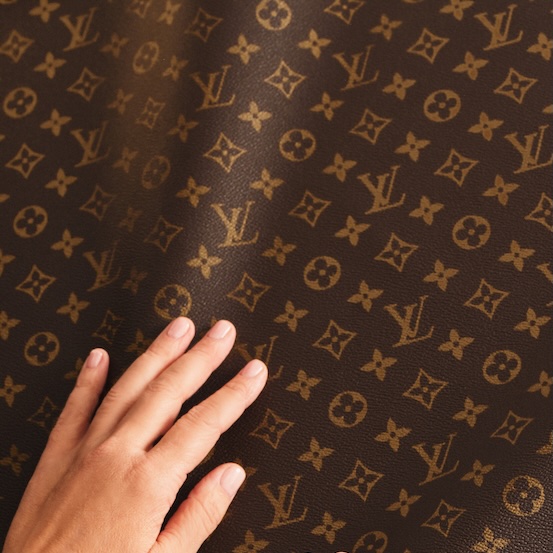It is no accident that the French call it rouge à lèvres. Red is a shade that is inseparable from the history of lipstick, for the strong connotations that distinguish it. And why, more than a makeup tool, it was, and still is, a discreet weapon of countless revolutions.
It is no accident that the French call it rouge à lèvres. Red is a shade that is inseparable from the history of lipstick, for the strong connotations that distinguish it. And why, more than a makeup tool, it was, and still is, a discreet weapon of countless revolutions.

“I really like how you dress, but when you wear red lipstick you look vulgar." All it took was one comment. One comment, perhaps naive, from a person whose opinion was never welcome, was enough to shake the confidence of an eighteen-year-old little woman. A little woman who, during the subsequent couple of years, could not pick up her favorite color of lipstick. Who heard the word "vulgar" echoing in her mind every time she opened her makeup bag. Today I am only a woman, and I wear red lipstick. I wear it for my ancestors, who fought so that today I can go out in painted lips without feeling afraid. I wear it for those who criticized me, who live in the shadow of a patriarchal mentality without realizing it. I use it for myself, who found power in the color that others made me fear. A power that I trace back to the feminist blood that runs through my veins.
Feminism and red lipstick have long gone hand in hand. It was 1912 and the suffragist movement dominated the political climate in the United States of America. Marches were frequent, but mostly peaceful. So were the tools used to advance the right to vote. As fate would have it, one of the suffragist protests in New York brought thousands of women to Elizabeth Arden's newly opened beauty salon. The businesswoman, founder of the namesake brand, was an ardent supporter of the cause and decided to show her support by offering tubes of red lipstick to the demonstrators. It wasn't long before the color began to paint the suffragette wave. In itself, red is already a symbol of power and strength, a connotation shaped by Egyptian elites, who saw it as a sign of life and health. However, in the form of lipstick, the red tone gained an additional symbolism. It represented not only strength, but feminine strength. And so it is to this day, even against all obstacles.
After accompanying the suffragettes in the path towards achieving the right to vote, red lipstick endowed flappers with independence and emancipation, although the rest of society associated the color with immorality and sexual depravity. But given that that rest of society was about to go to war, it was up to women to lead the labor, and therefore social, landscape of the mid-20th century. By entering the labor market, women came into possession of their own money, starting the boom in the beauty industry. As one of the cheapest cosmetic products, red lipstick was high on the shopping list of emancipated women, growing along with their professional development. And for women in the US military, red lipstick became a must. Elizabeth Arden, who thirty years earlier had been responsible for associating this product with the suffragist movement, was commissioned by the government to create a shade exclusive to military use, and so in 1941 Montezuma Red was born.
In Europe, red lipstick reinforced its political connotation. Adolf Hitler was particularly critical of this color, since it went against the ideas of purity he defended among women. In the Allied countries, its use became a protest against fascism. And even when high taxes in the United Kingdom made it difficult to buy this product, women began to dye their lips with beet juice, in an effort to preserve the demonstration of their political position. In Portugal, the social landscape was plagued by suffocating ideals of femininity, as a result of a dictatorship that stopped the advancement of women's rights for much of the 20th century. With the exception of rare cases of irreverence, of which Natália Correia was a prime example, red lipstick only began to be widespread in the 1960s, accompanying the explosion of student protests criticizing the Estado Novo. Gradually, women in Portugal began to wear makeup and pants and, at the same time, to make themselves heard.
It is important to clarify that the examples raised in the last paragraphs refer mostly to middle and upper-class white women. It is known that the suffragist movement of the early 20th century excluded (sometimes deliberately) women of color and low-income women, for whom red lipstick was, for many years, not a symbol of power, but of oppression. Caricatures, statues, and representations perpetuated the stereotypes associated with black communities by painting their lips a garish red, which made it impossible for black women to take over the narrative. Their hyper sexualization was recurrent, much more so than in white women, and it took several decades before this cosmetic product offered the same symbol of power to women of color as it did to their white counterparts. Today we finally see red lipstick serving as an intersectional feminist weapon. And Alexandria Ocasio-Cortez is one of the most prominent names harnessing the power of this color. The US congresswoman has become known for her regular use of red lipstick since the beginning of her political career. In an interview with American Vogue, Ocasio-Cortez explained that she did so because during election campaigns, where she spent days going door-to-door, she realized that people remembered her for the color of her lips. The congresswoman also stated that " being Latina, this is like very much our culture (...), I will wear a red lip when I want confidence, when I need a boost of confidence."
Red lipstick is still a political symbol these days - and a very powerful one. In 2015, during the anti-government protests that took place in Macedonia, an activist went viral for leaving a red mark on one of the shields containing the demonstration. Jasmina Golubovska told The Guardian that she asked a policeman if she could use her shield as a mirror to apply the lipstick, and very quickly kissed the object. The photo quickly traveled the world and became one of the most powerful of the protests. In 2019, in Chile, thousands of women marched blindfolded against the cases of sexual violence that plagued the country. The demonstrators wore a red scarf and applied lipstick of the same color to reinforce their message, which stressed that the blame for sexual abuse is never on the victim, but on the perpetrator. And in Portugal, in early 2021, a disturbing case took over the presidential campaigns, transporting us back to the time of the Estado Novo, when women were criticized for applying red lipstick. André Ventura, leader of Portugal's far-right party, criticized presidential candidate Marisa Matias for her "very red lips." The wave of outrage was immediate and took the form of a hashtag. Through the words #VermelhoEmBelém, several figures from politics, entertainment, as well as ordinary citizens, showed their discontentment towards the situation by posting pictures wearing red lipstick. Men and women, young and old, pointed out how the comment was a direct attack on women's freedom and an alarming step backwards from what we have already achieved as a society.
A red lipstick will never be just a red lipstick. It is a political symbol. It is the embodiment of women's freedom of expression, and of the power and strength it took to get this far. The fact that there is a man, in the 21st century, in the Portuguese Parliament, criticizing a woman's choice to wear red lipstick is a dangerous indication of what may await us in the future. At first, it seems to be just the lipstick issue. But it quickly evolves into an attack on other rights that have been so hard won. Look at the United States and you will realize how easily women's reproductive choices have been put at risk, erasing decades and decades of progress. We need to nip the problem in the bud, even at its most insignificant traces. For the women who fought to make red lipstick a symbol of power. For the women who used red lipstick to gain the power that was due to them. And for the women who preserve the strength of this color, by overcoming any obstacle that comes their way. We are far from the end of the scarlet insurrection.
Originally translated from The Revolution Issue, published April 2023.Full stories and credits on the print issue.
Most popular

O que lhe reservam os astros para a semana de 30 de dezembro a 5 de janeiro
30 Dec 2025
.jpg)
.jpg)
Relacionados

Louis Vuitton: aniversário do icónico Monogram celebra-se com muitas novidades
01 Jan 2026


O que lhe reservam os astros para a semana de 30 de dezembro a 5 de janeiro
30 Dec 2025


.jpg)